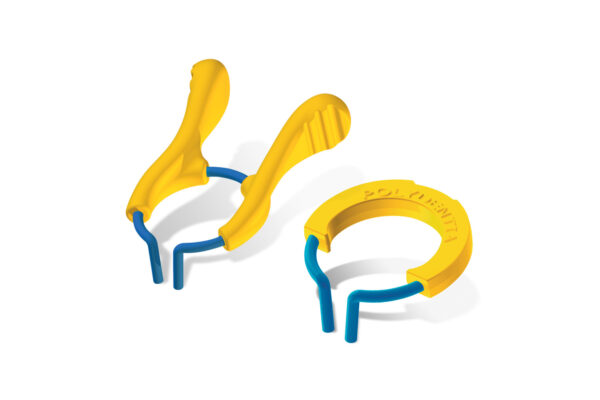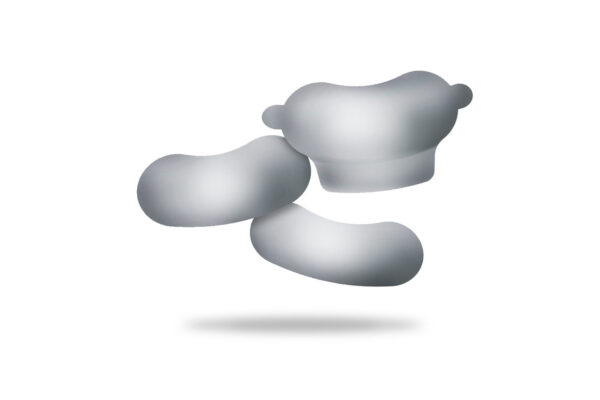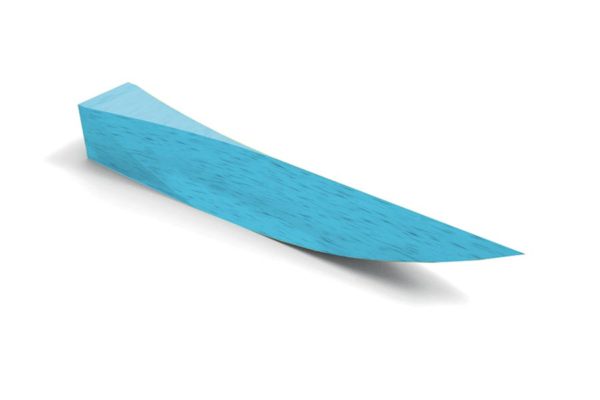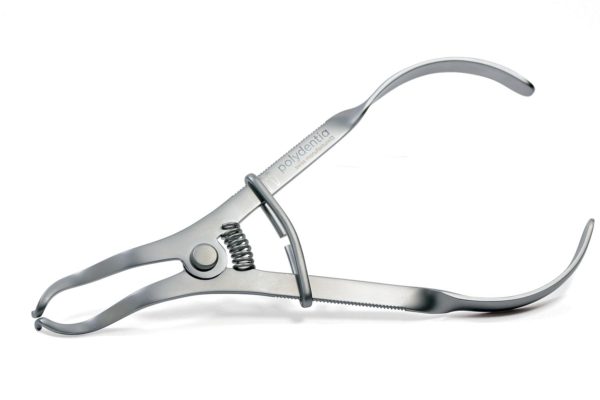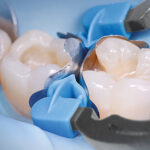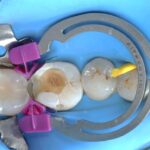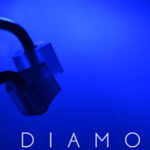21 Jun Class II restoration of a primary molar – myRing Junior – Dr Sabová
Class II restoration of a primary molar with myRing Junior
by Dr Martina Sabová

Dr Martina Sabová
Martina Sabová graduated in 2012 at Comenius University in Bratislava, Slovakia. Since that time, she has been specialized in treating paediatric patients. In her every day practice she is mostly dealing with uncooperative children. As a member of POPI Slovakia (Institute of Process Oriented Psychology), she emphasizes the importance of psychological approaches for managing pediatric patients’ behavior. She yearly attends international courses and hands-on trainings in the field of dentistry. She has been also lecturing paediatric dentistry, aesthetic dentistry and doing workshops for students of dental faculties in the capital of Slovakia. She is also a member of IAPD (International Association of Paediatric Dentistry), a member of ESCD (European Society of Cosmetic Dentistry), a Key Opinion Leader for 3M Science Applied to Life in Slovakia and a StyleItaliano Silver member.
clinical case
The young patient came for a periodic checkup. After a preliminary analysis we found a class II mesial carious lesion on primary molar 6.5,
Since the dimensions of the carious lesion were limited, we decided to proceed with a direct composite restoration procedure using myJunior kit from Polydentia.
The kit includes two different rings, myClip Junior and myRing Junior. Although the sectional matrix ring myClip Junior can be positioned without forceps (which intimidate children) -just with the fingers – we chose myRing Junior as it represents an ideal sized sectional matrix ring for the restoration on this young patient.
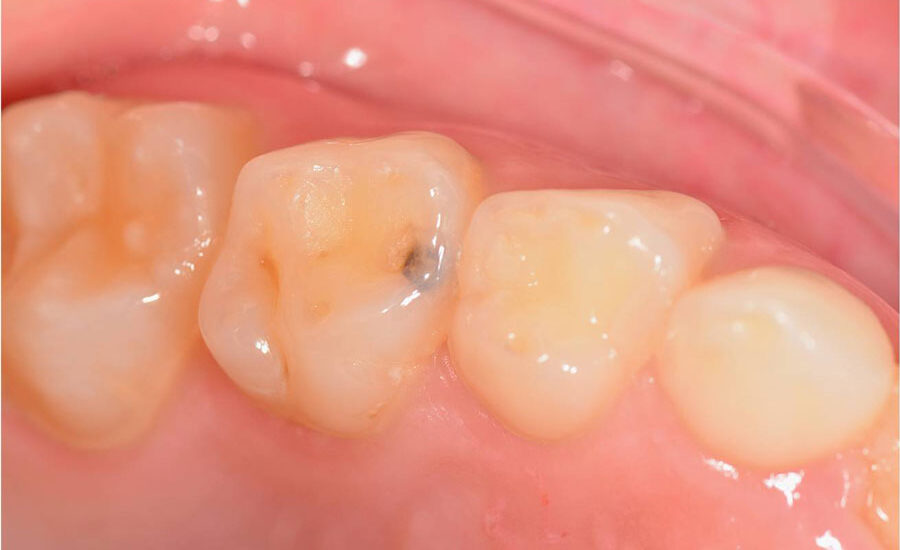
1: Pre-operative situation. Though the patient reports no symptom, the preliminary analysis revealed a class II carious lesion on primary molar 6.5.
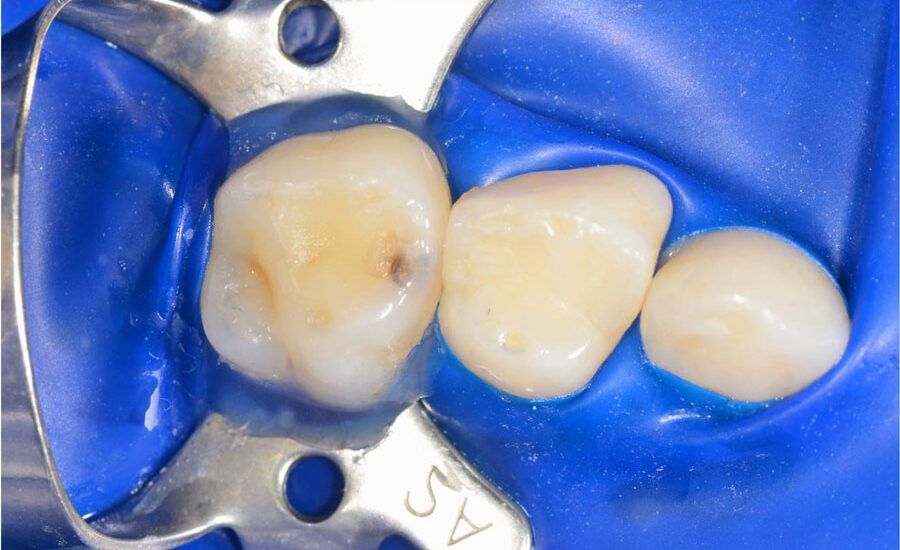
2: The quadrant after rubber dam isolation.
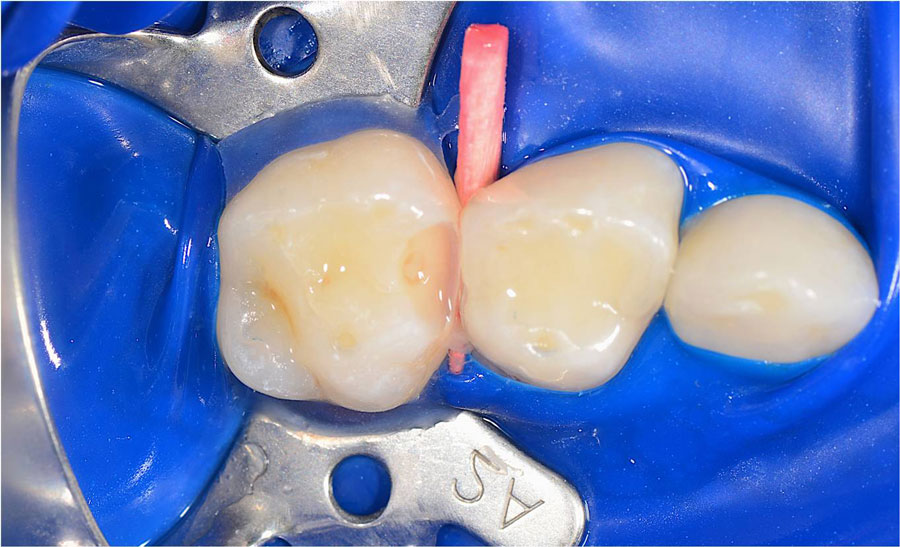
3: Pre-wedging and cavity preparation. Enamel and infected dentin were removed first. The cavity was then cleaned until the hard dentin was found and disinfected.
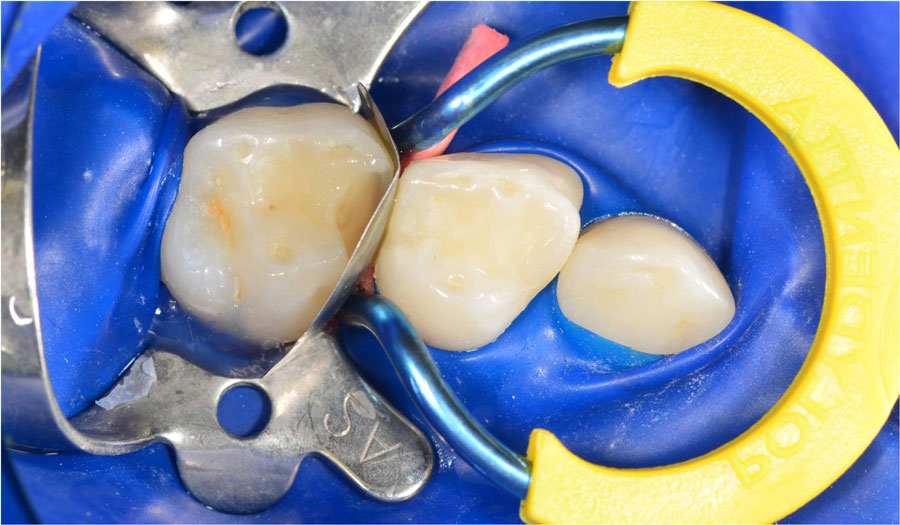
4: For this restoration, we used myRing Junior and a Quickmat Junior sectional matrix. myRing Junior fits perfectly into the young patient’s small mouth, while the Quickmat Junior sectional matrix offers the ideal height for restoring the contact surface of the primary teeth.
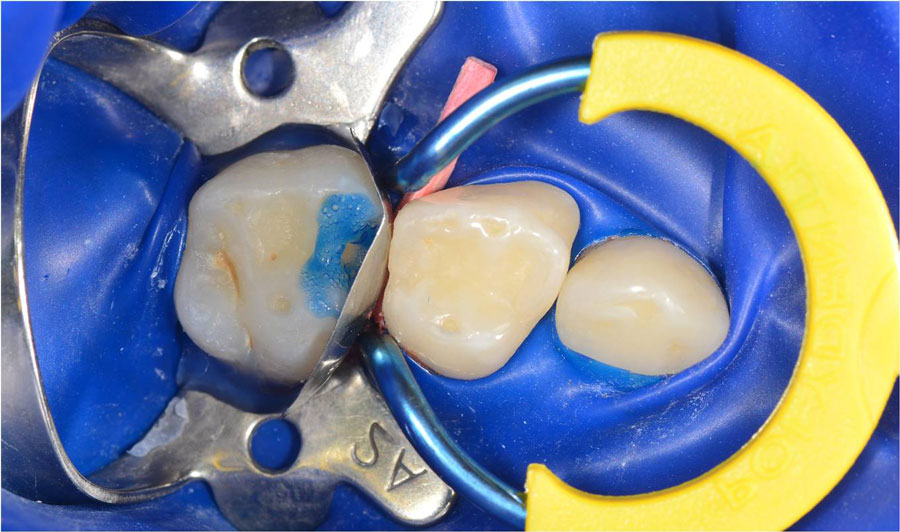
5: Once the sectional matrix system was placed, we started with the adhesive procedure. As first etching of the enamel was performed using 35% orthophosphoric acid; after that, a single universal adhesive was used to increase the bonding forces in the enamel.
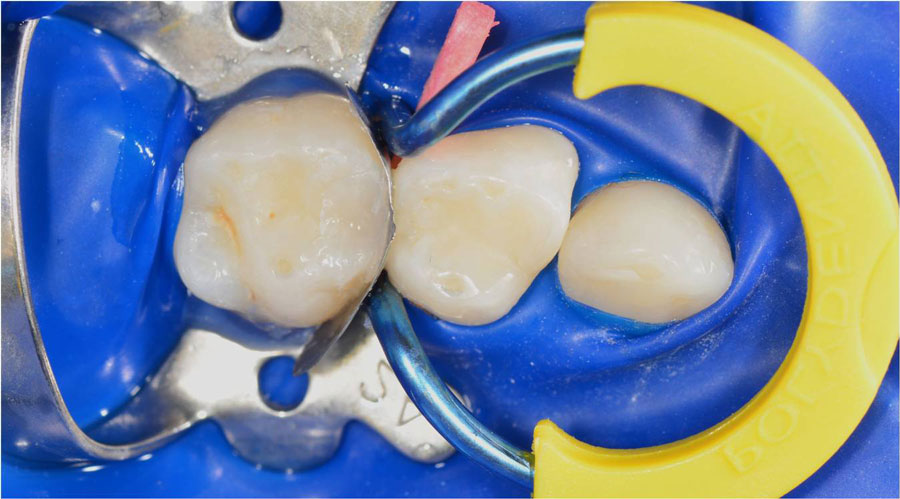
6: The clinical situation after modelling the occlusal area and polymerization.
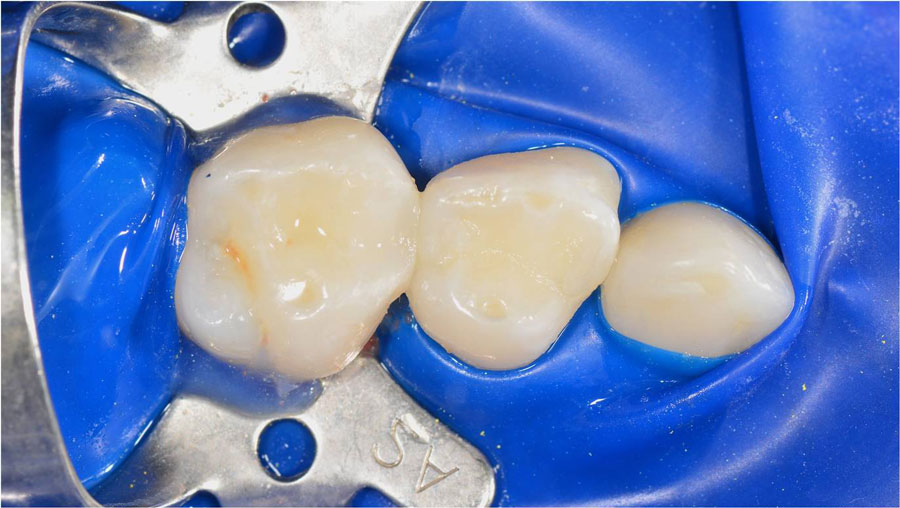
7: Finishing procedure: myRing Junior, wooden wedge and Quickmat junior sectional matrix were removed. Thanks to the optimal matrix adaption in the interproximal area, no long shaping operations were necessary before polishing.
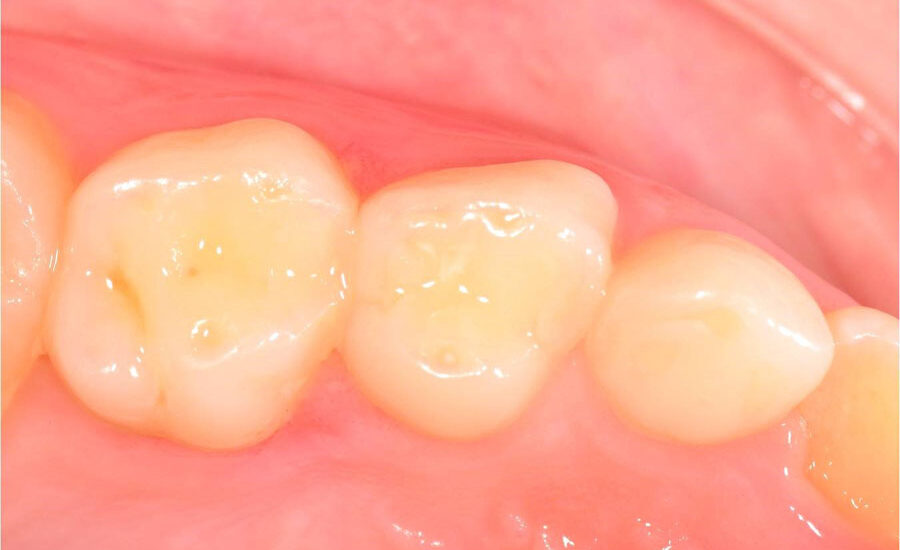
8: Clinical situation after 1 week.
conclusion
Children restorative treatments are easier thanks to myRing Junior and the paediatric solutions from Polydentia. Class II’s restorations are more comfortable and more efficient thanks to the small dimension of the sectional matrix ring and the junior matrices, as they ensure a perfect fit on deciduous teeth and prevent time-consuming composite flashes. In addition, the restorations are more pleasant because my little patients do not have to deal with long treatment times.
other clinical cases
-
Class II adjacent cavities on 1st and 2nd molars – QuickmatFIT anatomical sectional matrices & myRing Forte – Dr David Gerdolle
A 28-year-old female patient, without any systemic medical conditions presented with a carious lesion affecting both molar 46D and 47M. The following case illustrates the direct composite restoration of the lesion using the Polydentia QuickmatFIT anatomical sectional matrices in combination with myRing Forte and myWedge plastic v-shaped wedges....
-
Class II cavity direct composite restoration on a young permanent premolar – myClip 2.0 – Dr Marina Papachroni
For young patients rebuilding the anatomy in class II cavity restorations is a major issue but not making too many occlusal adjustments after finishing the layering procedures is one of the same importance aspects. The following images show the step-by-step treatment we performed for treating decay on the upper first premolar of a 15-year-old teenager. ...
-
Class II cavity direct restoration on young permanent molar with myQuickmat Forte – Dr Marina Papachroni
Class II (interproximal) decay involves the proximal surface of a posterior tooth and it is a common occurrence in many dental patients. One challenge for the clinician is to accurately recreate a physical contact to the adjacent tooth and, at the same time, to restore proper interproximal anatomic form. This case involves a teenager 16 years old with an interproximal lesion in his left lower molar (#36)....
-
Class II direct composite restoration on first premolar – QuickmatFLEX sectional matrices and myClip Junior – Dr Marina Papachroni
A male teenager came to our office feeling pain in the upper left quadrant. We proceeded with a Class II restoration of the first premolar without removing brackets. The following images show the step-by-step direct composite restoration procedure using the premolar sectional matrix QuickmatFLEX in combination with the paediatric sectional matrix ring myClip junior. ...
-
Class II restoration of a primary molar – myRing Junior – Dr Sabová
The young patient came for a periodic checkup. After a preliminary analysis we found a class II mesial carious lesion on primary molar 6.5. Since the dimensions of the carious lesion were limited, we decided to proceed with a direct composite restoration procedure using myJunior kit from Polydentia. ...
-
Class II restoration on a first molar – QuickmatFIT anatomical sectional matrices and myRing Forte – Dr Cristian Scognamiglio e Dr Alessandro Perucchi
The patient came for a consultation complaining of discomfort at tooth 36 when chewing. Molar 36 presented a very old composite restoration with initial disto-occlusal infiltration. We decided to carry out an OD restoration that also involved the buccal surface in order to replace the filling with a new aesthetic restoration. In this clinical case, we illustrate the procedure for the step-by-step restoration of tooth 36 using the Polydentia QuickmatFIT Molar sectional matrix in combination with the myQuickmat Forte sectional matrix ring....
-
Class II restoration on second bicuspid – myQuickmat Forte kit – Dr. Chiodera
The Polydentia myQuickmat Forte kit is a very effective system for posterior class II restorations....
-
Diamond24, 24 solutions for your restorations of Class II cavities
Diamond24 and myRing Classico: 24 solutions for your Class II restorations. Read the article written by Dr. Chiodera, which explains how to get great contact points with Diamond24 and myRing Classico for Class II cavity restorations. ...
-
Dr. Chiodera – Class III restoration – Unica anterior
The patient came to our attention for a regular check. A first analysis revealed a class III carious lesion on incisor 21. We decided to eliminate the carious lesion and proceed with a direct composite restoration of the cavity....
-
Dr. Chiodera – MOD restoration on first Molar – myQuickmat Classico kit
The Polydentia myQuickmat Classico kit is a very efficient system for posterior class II restorations....

